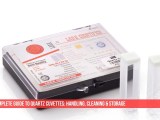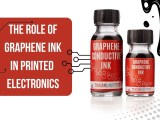
The Magic of Silver Paste: What Makes It Conduct Electricity?
September 22, 2025You might not see it, but a remarkable material called silver conductive paste is working behind the scenes in many of your everyday electronics. From the screen of your smartphone to the solar panels on rooftops, this “electric glue” enables reliable connections.
But what exactly is it, and how does it work?
What’s In the Jar? The Simple Composition
Think of silver paste not as a single substance, but as a sophisticated composite material. It’s made of three key ingredients:
The Star Player: Silver Flakes or Nanoparticles
This is the part that does the conducting. Pure Silver is the most electrically conductive metal on Earth. These tiny, flat flakes (or even smaller nanoparticles) are what create the pathways for electricity to flow.
The Binder: The “Glue”
This is usually a polymer or resin (like epoxy or a silicone-based material). Its job is to hold all the silver particles together once the paste has dried or cured. It imparts the final material its physical strength and enables it to adhere to surfaces such as glass, plastic, or ceramics.
The Delivery System: Solvents and Additives
The paste starts gooey, so you can screen-print it, syringe-dispense it, or spread it easily. Solvents (liquids) make this possible. Once the paste is applied, these solvents evaporate. Other special additives might be included to improve flow, prevent settling, or enhance adhesion.
In a nutshell: It’s a suspension of tiny silver bits held in a special glue and liquid, designed to be applied easily and then hardened.
How Does Silver Paste Work? The Mechanism of Conductivity
This is the most fascinating part. When you first apply the paste, it’s not conductive because the binder and solvents separate the silver flakes.
The magic happens during the curing process. This usually involves heating the paste to a specific temperature for a set time (e.g., 30 minutes at 150°C / 300°F). Here’s what occurs:
Solvents Evaporate: The liquid carriers vaporize, leaving behind a solid matrix.
The Binder Cures: The polymer “glue” hardens, locking everything in place.
Particles Make Contact: As the solvents disappear and the binder shrinks slightly, the millions of silver flakes are pushed closer and closer together.
Eventually, they pack so tightly that they form a continuous, intricate network of touching particles like a three-dimensional chain-link fence woven through the hardened glue. Electrons can now hop from one silver flake to the next, creating a path for electricity to flow through the entire material.
Analogy: Imagine a road blocked by many large boulders (the binder and solvents). You can’t drive through. Now, imagine building bridges between all the boulders (the silver flakes making contact). Suddenly, you have a complete road you can drive on (current can flow).
Why Silver? The Key Properties
Engineers choose silver paste for a combination of unbeatable properties:
Superb Electrical Conductivity: As mentioned, Silver is the king of conduction. Even though the paste isn’t as conductive as solid Silver, it gets very close, offering very low electrical resistance.
Excellent Thermal Conductivity: Heat is a major enemy of electronics. Silver is also the best conductor of heat. Silver paste doesn’t just move electricity; it effectively pulls heat away from sensitive components, helping to cool them down.
Strong Adhesion: Once cured, it sticks firmly to a wide variety of materials, creating a durable mechanical and electrical bond.
Cures at Low Temperatures: It can form these strong connections at temperatures much lower than the melting point of Silver (962°C), making it perfect for use on materials that can’t handle extreme heat, like most plastics.
Oxidation Resistance: Unlike copper, which forms a non-conductive rust (oxide layer) that stops electricity, silver oxide is still conductive. This means the connection remains stable and reliable for years to come.
Where Do We See It in Action? (Applications)
Silver conductive paste is everywhere in modern technology:
Printed Electronics: The electrodes on touchscreens and flexible displays are often “printed” onto the surface using silver paste.
Photovoltaic Cells (Solar Panels): It’s used to print the fine grid lines on solar cells that collect the generated electricity and send it out for use.
PCB Assembly: It’s used to attach tiny chips and components to circuit boards, especially in surface-mount technology (SMT).
Automotive Electronics: From rear-window defrosters to sensors throughout the car, silver paste provides robust connections.
RFID Tags & Medical Sensors: Its printability makes it ideal for creating the cheap, disposable antennas in these devices.
Conclusion
Silver conductive paste is a perfect example of materials engineering. By combining the unparalleled conductivity of Silver with the practical handling of a polymer glue, scientists have created a versatile and essential material that powers our connected world. It’s the invisible, conductive ink that writes the functionality into our modern devices.


